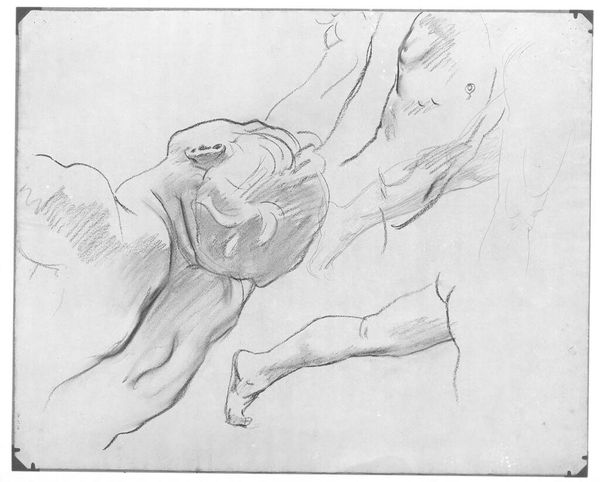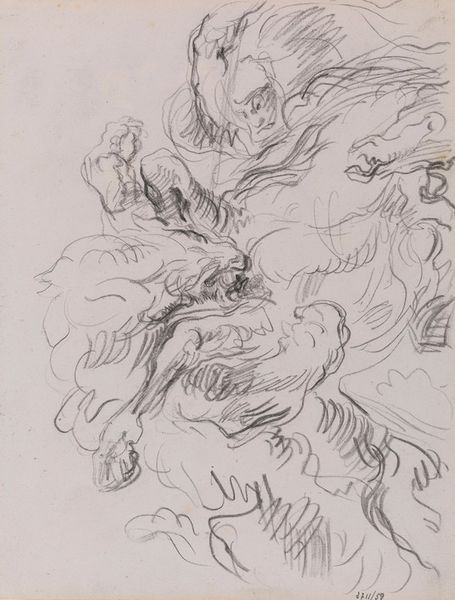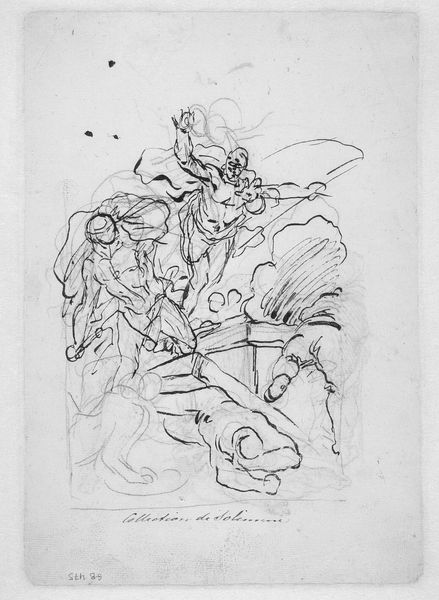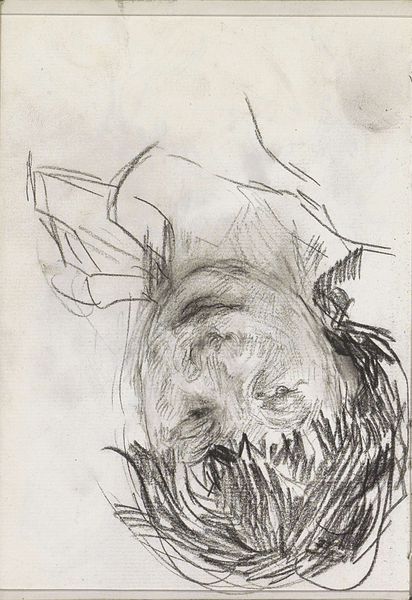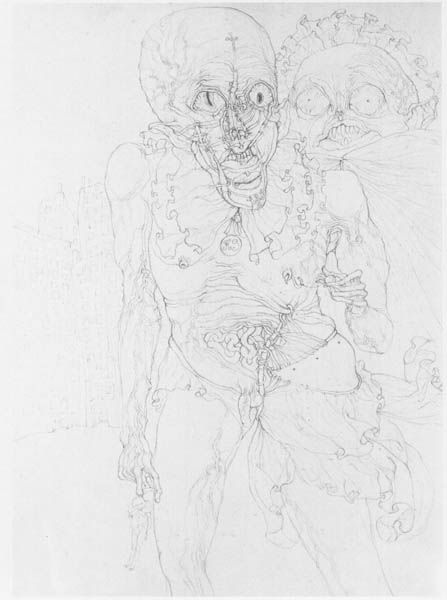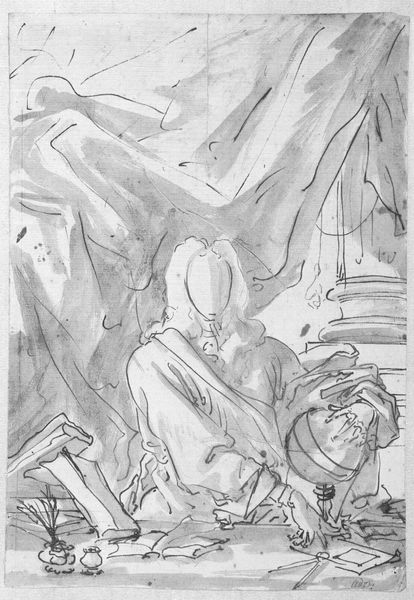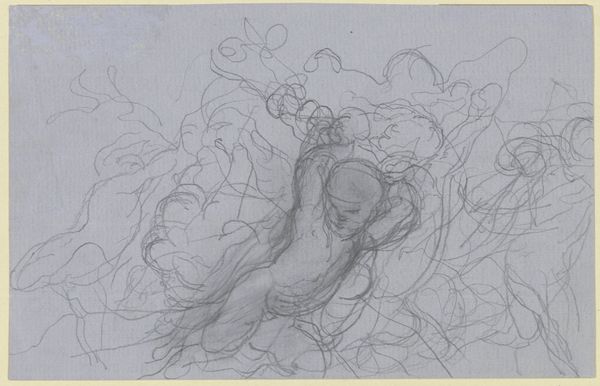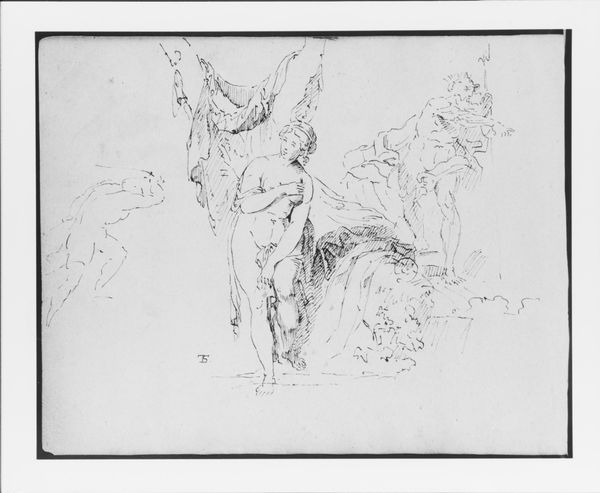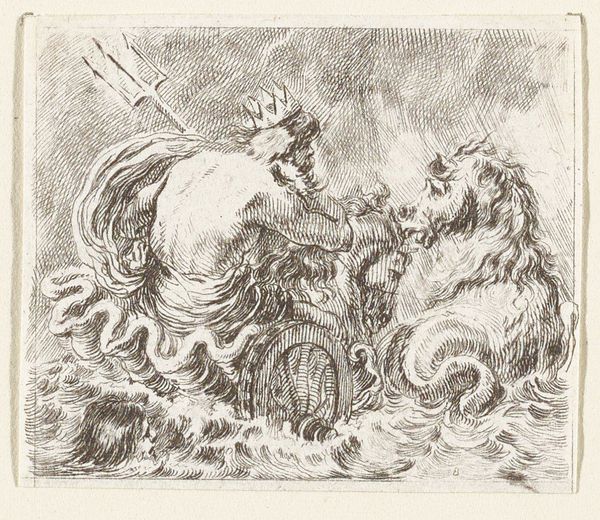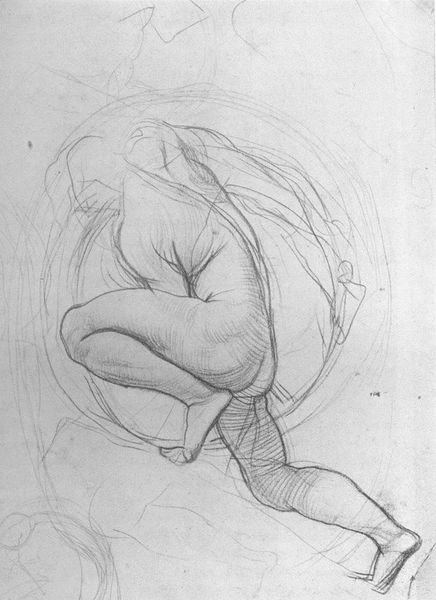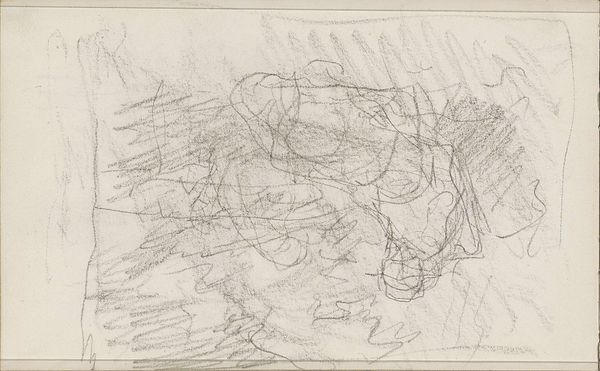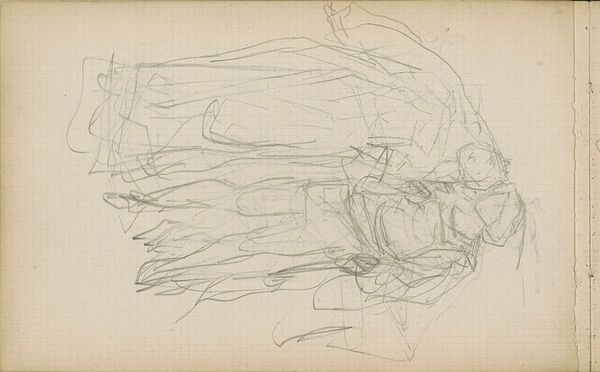
Forpartiet af en liggende løve, fra 'David slås med bjørnen'. 1628 - 1630
0:00
0:00
drawing
#
drawing
#
baroque
#
animal
#
landscape
#
figuration
#
realism
Dimensions: 183 mm (height) x 280 mm (width) (bladmaal)
Curator: Looking at this drawing, I'm immediately struck by its tension. The lion's face seems caught between repose and snarling aggression. Editor: Precisely! It’s a study attributed to Willem Panneels, dating from around 1628-1630. It’s part of a larger composition titled, “Forpartiet af en liggende løve, fra 'David slås med bjørnen'," housed at the SMK, the National Gallery of Denmark. The artist's choice of rendering such an important image through a humble graphite on paper gives me pause. Curator: Indeed. The fact that this artwork takes the form of a drawing challenges traditional notions about power, specifically its artistic representations through traditional visual language. This feels radical. Lions symbolize not just power and royalty but also colonialism; rendering the Lion as graphite allows its dismantling and reshaping in critical conversations about these structures. Editor: The political resonances you draw out are potent, yet this artwork still serves an illustrative, documentary purpose as it was initially intended for painting studies and prints within an established artistic framework. It reveals how the socio-political role of images during Panneels's time often intertwined. He walked the line between the powerful elite while being conscious of new forms of viewership. Curator: So, this piece becomes about understanding not just the final image but the artist's complex relationship with it? In doing so, is Pannell's highlighting how art is a space to challenge those paradigms while negotiating their existence? Editor: Panneels shows us, perhaps, that even seemingly innocuous images are never politically neutral and this sketch stands as a testament. Curator: The intersectional layering happening is quite fascinating here; something about a historical artistic depiction that has lasting cultural power but is constantly redefined. Editor: In essence, we see the political complexities embedded in art itself and that still are pertinent.
Comments
No comments
Be the first to comment and join the conversation on the ultimate creative platform.
